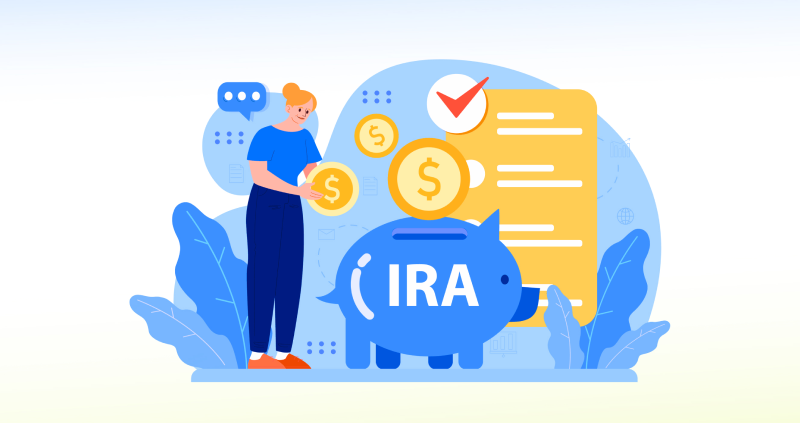Asset allocation: Building a balanced investment portfolio for long-term success
Learn how to divide your investments across asset classes, manage risk, and adapt your strategy over time to meet your financial goals.
Asset allocation definition: Asset allocation is the process of dividing investments among asset classes like stocks, bonds, and cash to balance risk and reward based on your goals and time horizon.
Asset allocation methods: Different methods, including strategic, tactical, and dynamic allocation, offer unique approaches depending on market outlook, risk tolerance, and life stage.
Rebalancing is key: Rebalancing regularly ensures your portfolio stays aligned with your investment strategies as market performance and life circumstances change.
What is asset allocation?
Asset allocation involves dividing your investment portfolio among different asset classes — such as stocks, bonds, or cash. Asset allocation may look different for everyone as it is based on your goals, risk tolerance, and time horizon.
Risk tolerance refers to your ability and willingness to lose a fraction or all of your initial investment in exchange for potentially higher returns. Essentially, how much you’re willing to risk for a greater return, which is not guaranteed.
Time horizon is the amount of time — in months, years, or decades — you need to invest your money to reach your financial goals. Your time horizon will likely change with your age, so younger investors may feel more comfortable taking greater risks, while retirees might shift to a more conservative approach.
The aim of asset allocation is essentially to balance risk and reward by spreading investments across asset classes that behave differently over time. Proper asset allocation investing can help to manage risk and improve your chances of meeting long-term financial goals.
The difference between diversification and asset allocation
When deciding on an asset allocation strategy, diversification is also part of the equation. You have most likely heard the saying, “Don’t put all your eggs in one basket,” which can translate to asset allocation and diversification as well. Diversification refers to the practice of spreading your funds into different investments to mitigate possible risks.
While the two are closely related, they are still distinct investment strategies. Asset allocation involves deciding how investments are divided among different assets, while diversification includes spreading — or diversifying — investments within each asset class.
Essentially, asset allocation is the process of deciding where to put your eggs (different asset classes), while diversification ensures you don't put all the same color and size eggs into a single basket. Both processes intend to reduce risk and are essential to help build a stable, well-rounded portfolio.
What is the best asset allocation method?
There’s no single ‘best’ asset allocation strategy that works for everyone. Since everyone has a unique financial situation, goals, and risk tolerance, what is most ideal for one person, might not work at all for someone else. The best asset allocation method depends on your financial goals, risk tolerance, investment timeline, market outlook, and how many liquid assets you need.
Balancing these factors will help you determine where and how to allocate your assets to maintain a well-rounded portfolio. Generally, assets with a higher risk may offer the highest returns; therefore, it is important to diversify your portfolio to compensate for both risk and return.
How age influences asset allocation
Your portfolio allocation strategy may also change depending on your age and career stage. Younger investors who are just getting started with their career may have more time and flexibility to recover from market downturns, allowing you to potentially take more risks.
As you get older, you will likely reach your peak income years and shift towards saving aggressively and gradually reducing risk to protect your nest egg. You might start considering future income needs and be more wary of market volatility.
Once you approach retirement, you may start making withdrawals and shifting your focus on capital preservation and steady income. Less exposure to volatile assets and inflation protection might become a higher priority. Asset allocation in retirement will be even more conservative as you focus on maintaining an income throughout retirement.
How to divide asset classes
In general, stocks have the highest risk and volatility amongst assets, but potentially offer the highest returns. Bonds are usually considered less risky, especially government bonds, offering lower but more stable returns. Cash is seen as the lowest risk, most stable asset, but with a tradeoff of a lower likelihood of appreciation and minimal defense against inflation.
Historically, investors have used 60% stocks and 40% bonds as an optimal asset allocation investing method, but due to the lack of performance of bonds in recent years, this structure may need to be reevaluated.
Other widely used asset allocation methods include:
Strategic asset allocation: Strategic asset allocation establishes a fixed asset mix (e.g., 70% stocks, 30% bonds) and is periodically rebalanced based on your goals. This is considered a long-term, passive approach.
Tactical asset allocation: Tactical asset allocation utilizes short- to medium-term market outlooks (e.g., overweighting stocks if bullish) to shift allocations. This method is an active, market-timing approach.
- Dynamic asset allocation: Dynamic asset allocation uses the continuous adjustment of asset mixing based on market volatility, changing risk levels, and life circumstances. This is considered a more risk-adaptive approach.
Rebalancing your portfolio
Asset allocation is not just a one-time process. As your investments grow over time, some may outperform others, causing your portfolio to naturally drift away from your initial allocation goals. It is recommended to regularly revisit your portfolio to determine if you need to make any adjustments to get it back to its initial proportions; this is where rebalancing takes place.
Portfolio rebalancing is the process of periodically adjusting your investment portfolio to maintain your desired asset allocation. This can be done by buying, selling, or adding new assets to ensure the mix of investments in your portfolio aligns with your investment goals, financial situation, and risk tolerance.
While some financial experts advise rebalancing every six to 12 months, or in regular intervals, others suggest basing rebalancing on how much percent a certain asset or class increases or decreases. Regardless of which method works best for you, rebalancing tends to function best when done infrequently.
How Raisin can help with diversification
Asset allocation is crucial in determining your investment outcomes. It is important to keep a diversified portfolio to mitigate possible risks and balance returns. Make sure you consider your risk tolerance, time horizon, and financial situation when developing your asset allocation strategy. You will also want to ensure to rebalance your portfolio from time to time to ensure your asset allocation goals are still in alignment.
If you are looking to diversify your portfolio or simply want more liquid assets, Raisin is here to help. The Raisin marketplace gives you access to a variety of high-yield savings products with competitive interest rates, allowing you to diversify your cash savings and to make the most of your money. Sign up today and start growing your wealth.
The above article is intended to provide generalized financial information designed to educate a broad segment of the public; it does not give personalized tax, investment, legal, or other business and professional advice. Before taking any action, you should always seek the assistance of a professional who knows your particular situation for advice on taxes, your investments, the law, or any other business and professional matters that affect you and/or your business.


